Light For Eggs
Practical Poultry
|Nov - Dec 2017
ALAN HOLTHAM says laying hens can benefit from a low cost extension of daylight

Light is a fascinating subject and one which has a far reaching influence in the natural world. Having been involved with light for much of my working life in the world of film and photography, I am well aware of many of its subtle properties such as intensity, colour temperature and wavelength, but I hadn’t really considered the effect that this could have on our humble chickens.
It is well known that chickens will lay fewer eggs in the winter months and that this is linked to day length rather than temperature. Under normal daylight conditions hens will lay most of their eggs during the spring and summer months, and then slow down or even stop completely during the winter. Pure breeds are more prone to a complete halt, whereas hybrids may keep going, albeit at a reduced rate.
The controlling factor for this is a small gland behind the eyes of the bird. This is the pituitary gland and is stimulated by daylight to produce a hormone that kick-starts the ovary into egg production. By adding artificial light you are effectively tricking the bird into an unnatural laying pattern.
This of course raises the ethical question about the long-term welfare of your birds and the effects of interfering with their natural rhythms. Commercially, laying hens are subjected to very scientifically calculated light regimes to keep them producing eggs virtually every day, but only for a period of about 18 months, after which they are effectively worn out and need to be replaced with younger birds. As a hen is born with a finite number of eggs already inside her, you are not gaining any more eggs by providing extra light, just controlling when they are laid. Once they are gone, they are gone, so if you are intending to keep your hens for their entire life, and are not particularly concerned with egg production, it is better to let them lay naturally over many years and just accept the fall off in the winter months.
Bu hikaye Practical Poultry dergisinin Nov - Dec 2017 baskısından alınmıştır.
Binlerce özenle seçilmiş premium hikayeye ve 9.000'den fazla dergi ve gazeteye erişmek için Magzter GOLD'a abone olun.
Zaten abone misiniz? Oturum aç
Practical Poultry'den DAHA FAZLA HİKAYE
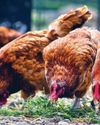
Practical Poultry
Growing food for Chickens
Mary Larham explores some crops to grow on your holding…
5 mins
January - February 2020
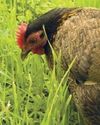
Practical Poultry
Poultry in the garden – the truth!
Jo-Jane Buxton shares her experiences
2 mins
January - February 2020

Practical Poultry
The British Waterfowl Association
Which came first, the goose or the egg?
3 mins
January - February 2020
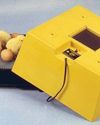
Practical Poultry
WHY FIT A FAN IN AN INCUBATOR?
Brinsea Products, the Incubation Specialists explain the difference between still air and forced draught
8 mins
January - February 2020
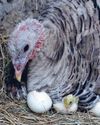
Practical Poultry
Incubating turkey eggs
Janice Houghton-Wallace looks at broody turkeys and artificial incubation
4 mins
January - February 2020

Practical Poultry
Chicken nesting box herbs
Diana Clauss owns The Blue Feather Farm, in St Cloud, Florida, home to chickens, ducks, goats, and Anatolian Shepherd dogs.
4 mins
January - February 2020
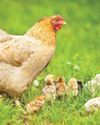
Practical Poultry
Incubate in January?
Jessica Wombwell says plan the breeding
5 mins
January - February 2020
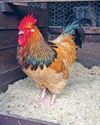
Practical Poultry
Andy's DIARY
Andy emphases the importance of keeping out damp and wet but allowing ventilation even in cold weather
5 mins
January - February 2020
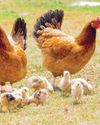
Practical Poultry
Feeding for Breeding
It may be winter, but as Joanna Palmer, nutritionist for Smallholder Range explains, now’s the time to get your flock in tiptop shape and plan ahead for a successful breeding season next spring.
3 mins
January - February 2020

Practical Poultry
A chick named Cuckoo raised by a duck!
Chris Hammacott and her husband live on a small croft in the Outer Hebrides, they keep a ‘no kill’ flock or rare and rescue sheep which they use to spin and weave rugs. They also share the 8 acres with hens, ducks, cats and 9 rescue pugs.
7 mins
January - February 2020
Translate
Change font size

